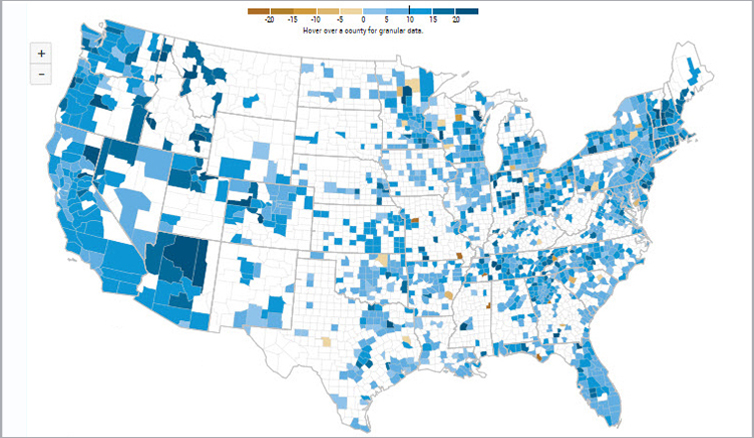Economic Research

By Nina Boyarchenko and Leonardo Elias

By Jaison R. Abel and Richard Deitz

By Martin Almuzara, Babur Kocaoglu, and Argia Sbordone

By Andrew F. Haughwout, Donghoon Lee, Daniel Mangrum, Joelle Scally, Wilbert van der Klaauw, and Crystal Wang

By Gara Afonso, Gonzalo Cisternas, and Will Riordan

By Felix Aidala, Gizem Kosar, and Wilbert van der Klaauw
RESEARCH TOPICS

The mission of the Applied
Macroeconomics and Econometrics
Center (AMEC) is to provide intellectual
leadership in the central banking
community in the fields of macro and
applied econometrics.
Data Releases
Global Supply Chain Pressure Index
(Updated: Monthly)
Measuring the Natural Rate of Interest
(Updated: Quarterly)
Multivariate Core Trend Inflation
(Updated: Monthly)
The New York Fed DSGE Model
(Updated: Quarterly)
New York Fed Staff Nowcast
(Updated: Weekly)
Outlook-at-Risk
(Updated: Monthly)
Treasury Term Premia
(Updated: Daily)
Yield Curve as a Leading Indicator
(Updated: Monthly)
Data Releases
Global Supply Chain Pressure Index
(Updated: Monthly)
Measuring the Natural Rate of Interest
(Updated: Quarterly)
Multivariate Core Trend Inflation
(Updated: Monthly)
The New York Fed DSGE Model
(Updated: Quarterly)
New York Fed Staff Nowcast
(Updated: Weekly)
Outlook-at-Risk
(Updated: Monthly)
Treasury Term Premia
(Updated: Daily)
Yield Curve as a Leading Indicator
(Updated: Monthly)

Monthly surveys conducted by the New York Fed track the sentiment of executives at regional manufacturing and service-sector firms regarding business conditions.
Data Releases
Empire State Manufacturing Survey
(Updated: Monthly)
Business Leaders Survey
(Updated: Monthly)
Supplemental Survey Report
(Updated: Quarterly)
Data Releases
Empire State Manufacturing Survey
(Updated: Monthly)
Business Leaders Survey
(Updated: Monthly)
Supplemental Survey Report
(Updated: Quarterly)
Charles M. Kahn, Ahyan Panjwani, and João A. C. Santos, Staff Report 1107, May 2024
Carole Roan Gresenz, Jean M. Mitchell, Belicia Rodriguez, R. Scott Turner, and Wilbert van der Klaauw, Staff Report 1106, May 2024
Benjamin Hyman, Brian Kovak, and Adam Leive, Staff Report 1105, May 2024
Marco Cipriani, Thomas M. Eisenbach, and Anna Kovner, Staff Report 1104, May 2024
Olivier Armantier and Charles Holt, Staff Report 1103, May 2024
Pablo Azar, Adrian Casillas, and Maryam Farboodi, Staff Report 1102, May 2024
Kristian S. Blickle, Evan Perry, and João A. C. Santos, Staff Report 1101, May 2024
Nina Boyarchenko, Richard K. Crump, Keshav Dogra, Leonardo Elias, and Ignacio Lopez Gaffney, Staff Report 1100, May 2024
Follow @NYFedResearch
Tools
Upcoming Events
People
Related New York Fed Content
Related External Content
By continuing to use our site, you agree to our Terms of Use and Privacy Statement. You can learn more about how we use cookies by reviewing our Privacy Statement. 























